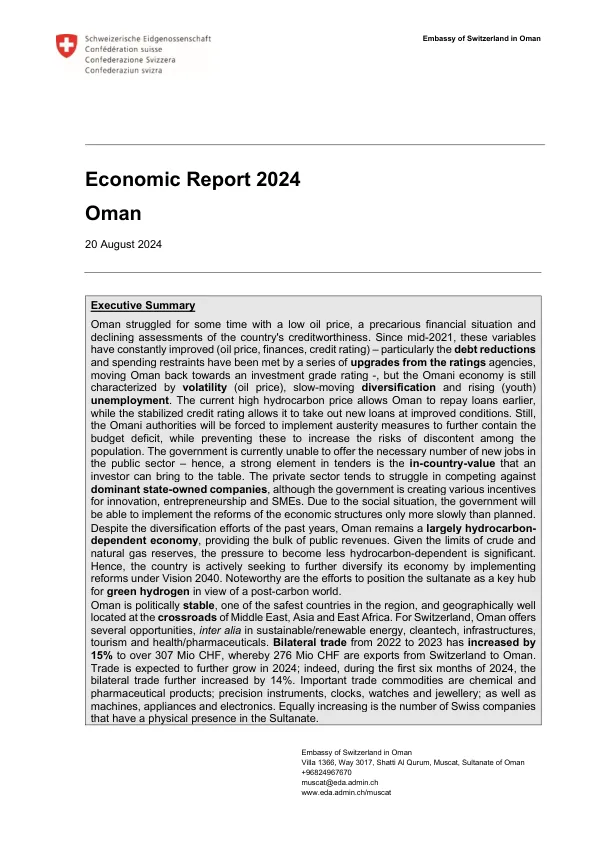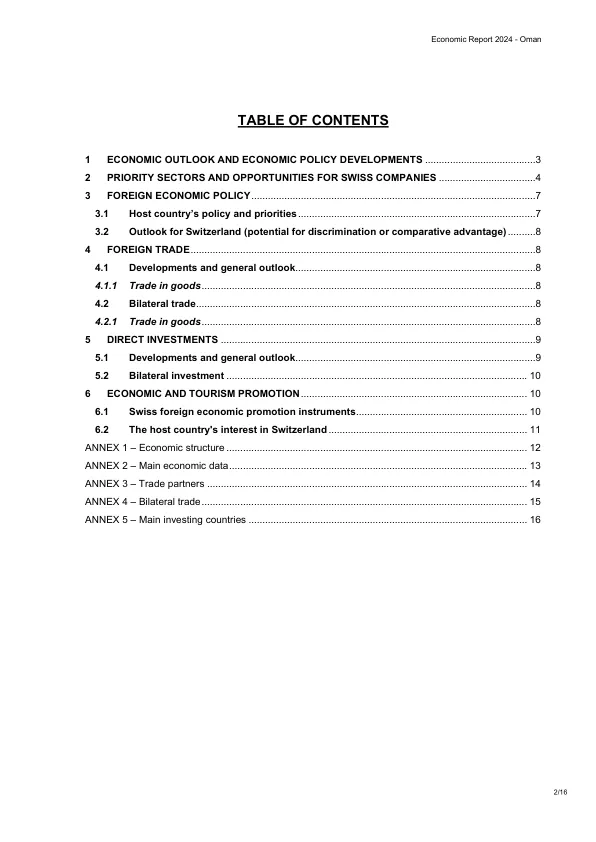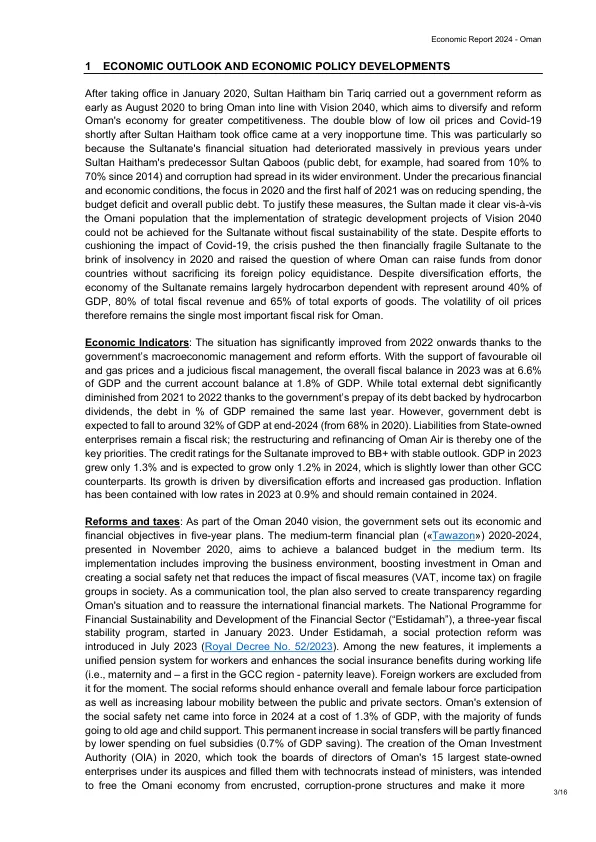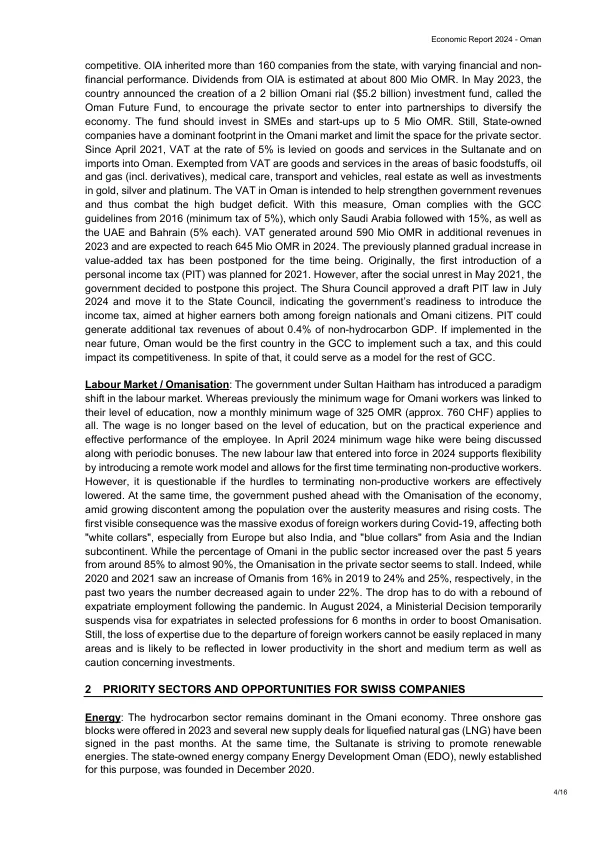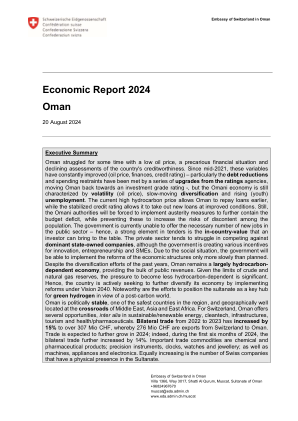Oman struggled for some time with a low oil price, a precarious financial situation and declining assessments of the country's creditworthiness. Since mid-2021, these variables have constantly improved (oil price, finances, credit rating) – particularly the debt reductions and spending restraints have been met by a series of upgrades from the ratings agencies, moving Oman back towards an investment grade rating -, but the Omani economy is still characterized by volatility (oil price), slow-moving diversification and rising (youth) unemployment . The current high hydrocarbon price allows Oman to repay loans earlier, while the stabilized credit rating allows it to take out new loans at improved conditions. Still, the Omani authorities will be forced to implement austerity measures to further contain the budget deficit, while preventing these to increase the risks of discontent among the population. The government is currently unable to offer the necessary number of new jobs in the public sector – hence, a strong element in tenders is the in-country-value that an investor can bring to the table. The private sector tends to struggle in competing against dominant state-owned companies , although the government is creating various incentives for innovation, entrepreneurship and SMEs. Due to the social situation, the government will be able to implement the reforms of the economic structures only more slowly than planned. Despite the diversification efforts of the past years, Oman remains a largely hydrocarbon- dependent economy , providing the bulk of public revenues. Given the limits of crude and natural gas reserves, the pressure to become less hydrocarbon-dependent is significant. Hence, the country is actively seeking to further diversify its economy by implementing reforms under Vision 2040. Noteworthy are the efforts to position the sultanate as a key hub for green hydrogen in view of a post-carbon world. Oman is politically stable , one of the safest countries in the region, and geographically well located at the crossroads of Middle East, Asia and East Africa. For Switzerland, Oman offers several opportunities, inter alia in sustainable/renewable energy, cleantech, infrastructures, tourism and health/pharmaceuticals. Bilateral trade from 2022 to 2023 has increased by 15% to over 307 Mio CHF, whereby 276 Mio CHF are exports from Switzerland to Oman. Trade is expected to further grow in 2024; indeed, during the first six months of 2024, the bilateral trade further increased by 14%. Important trade commodities are chemical and pharmaceutical products; precision instruments, clocks, watches and jewellery; as well as machines, appliances and electronics. Equally increasing is the number of Swiss companies that have a physical presence in the Sultanate.
Economic Report 2024 Oman - SECO
主要关键词
